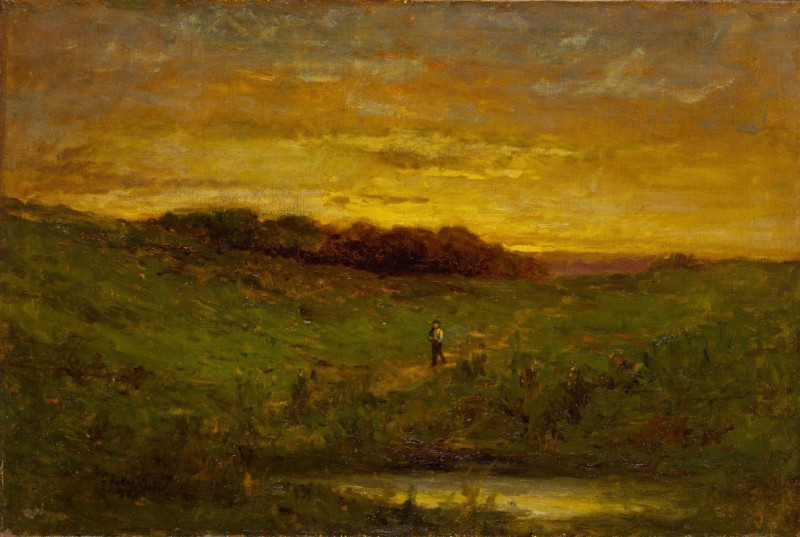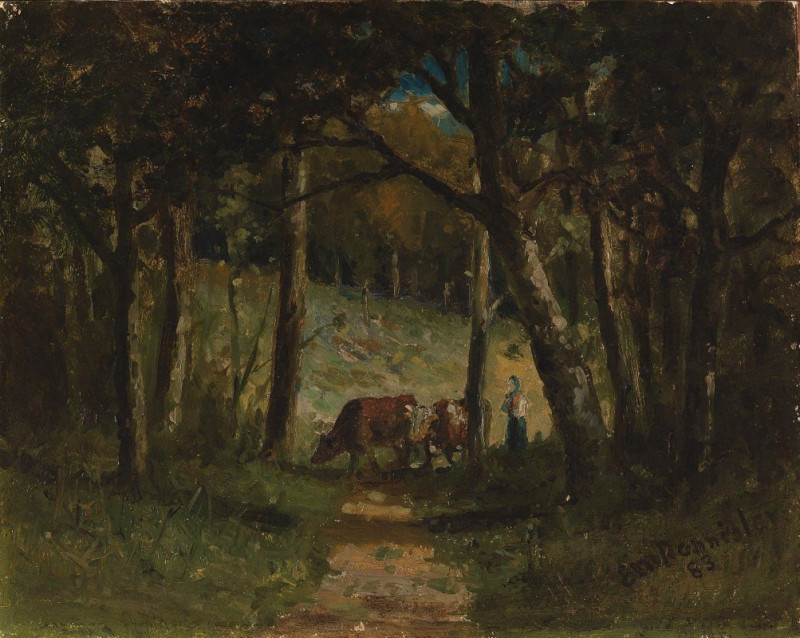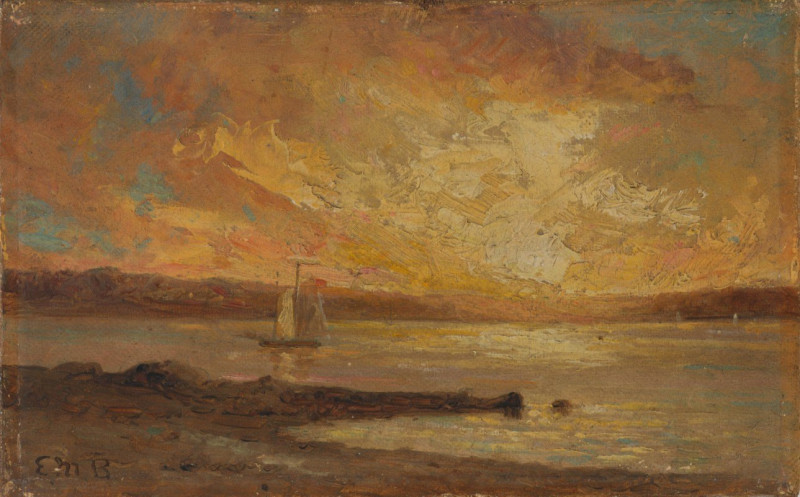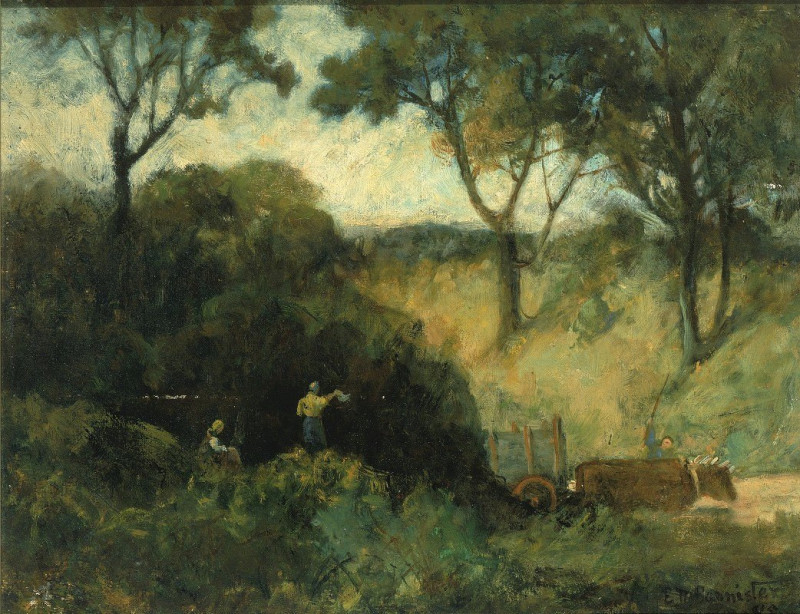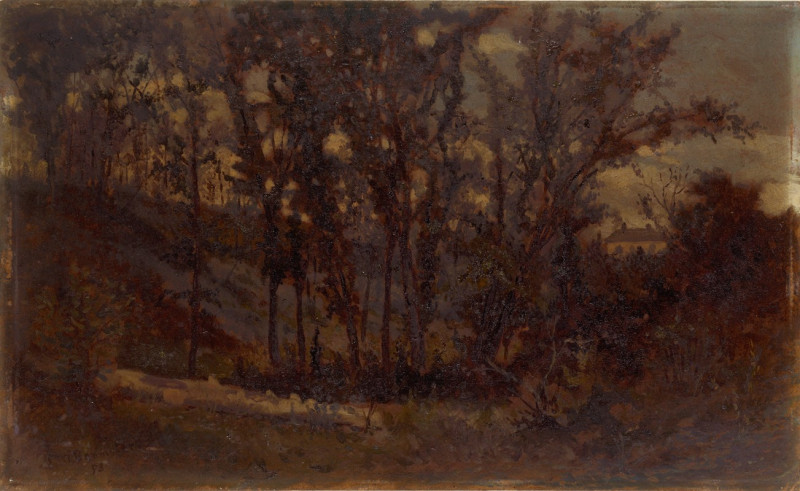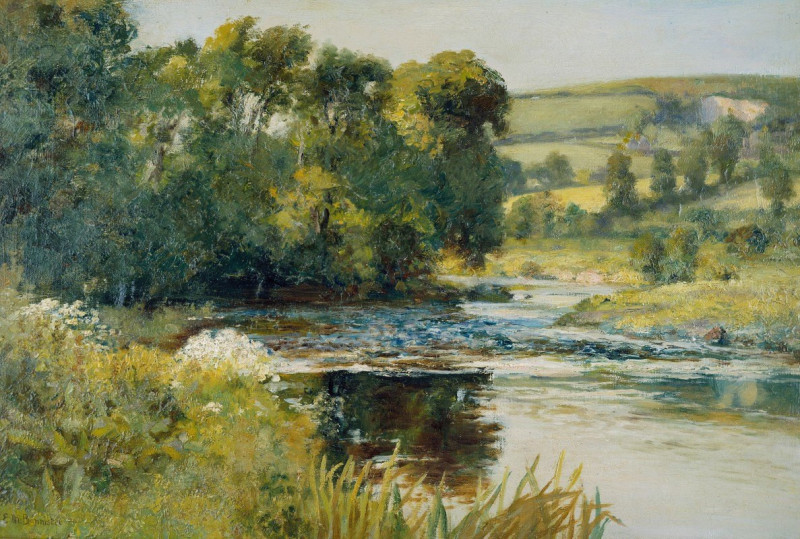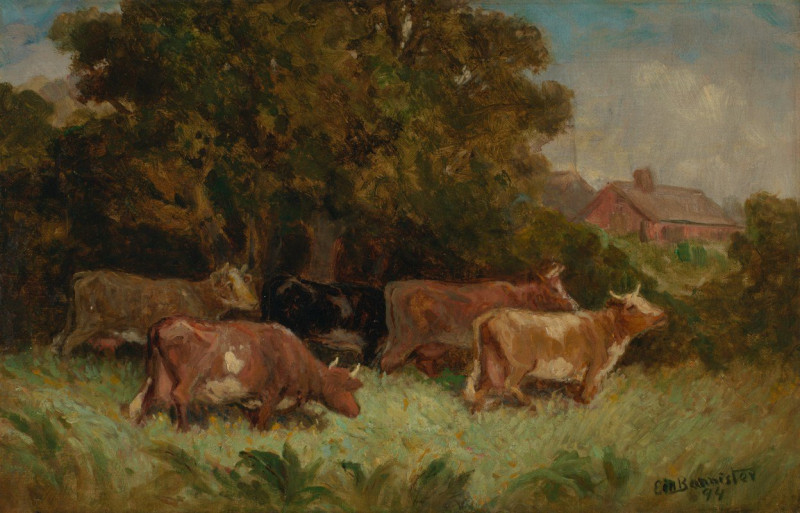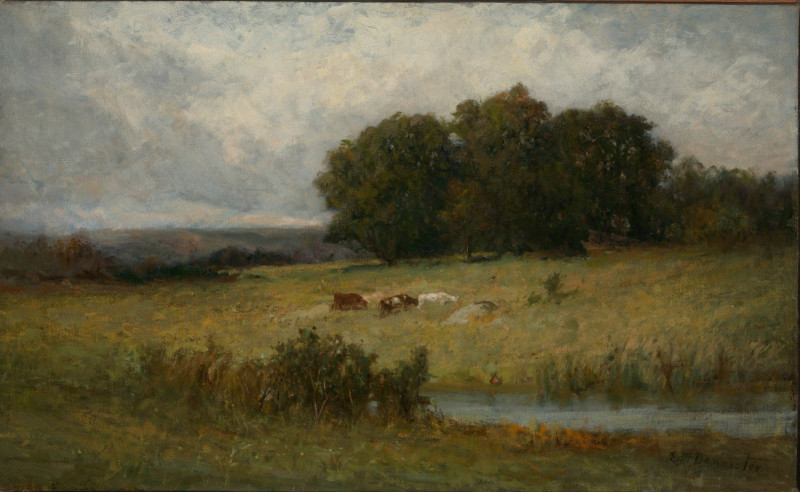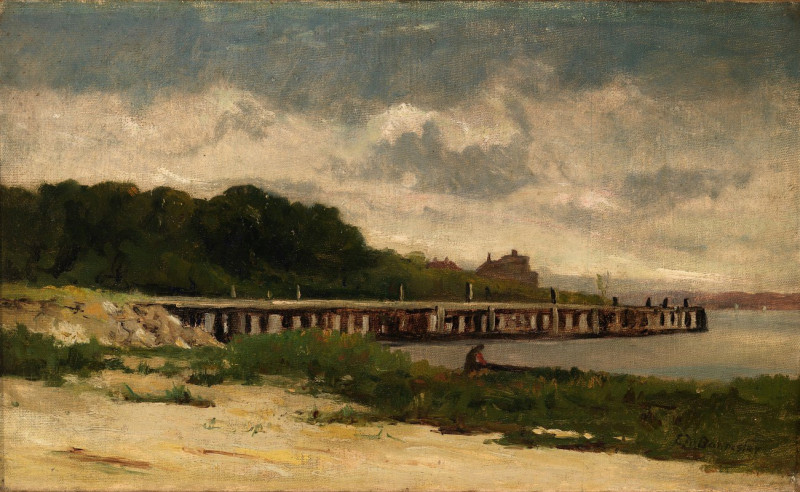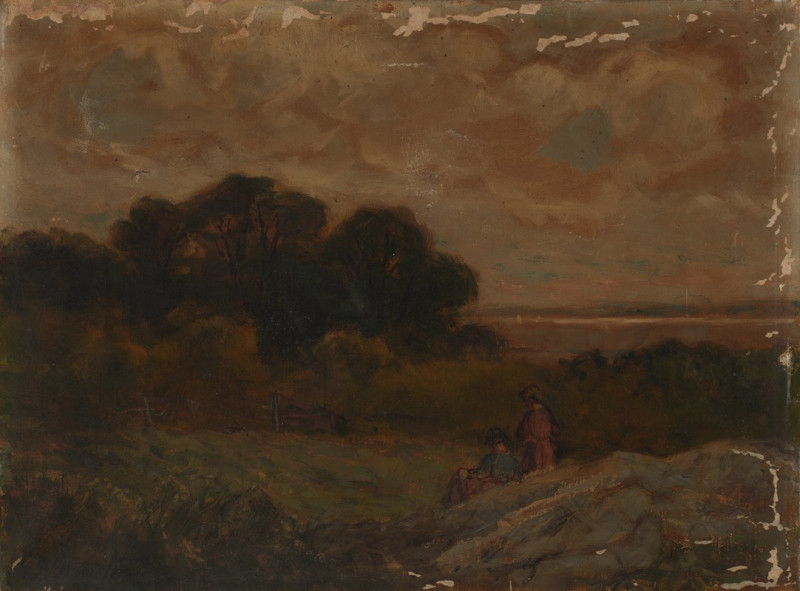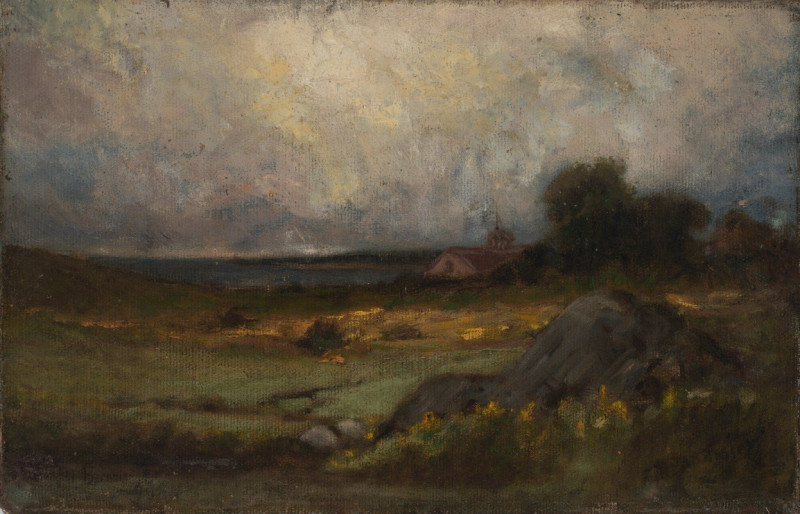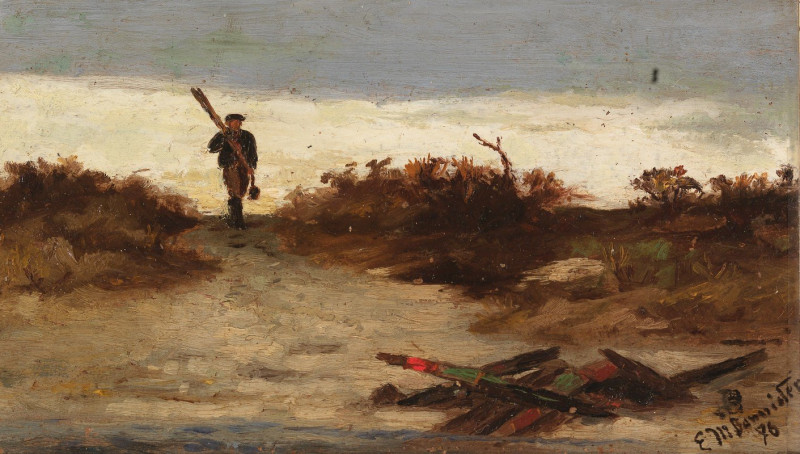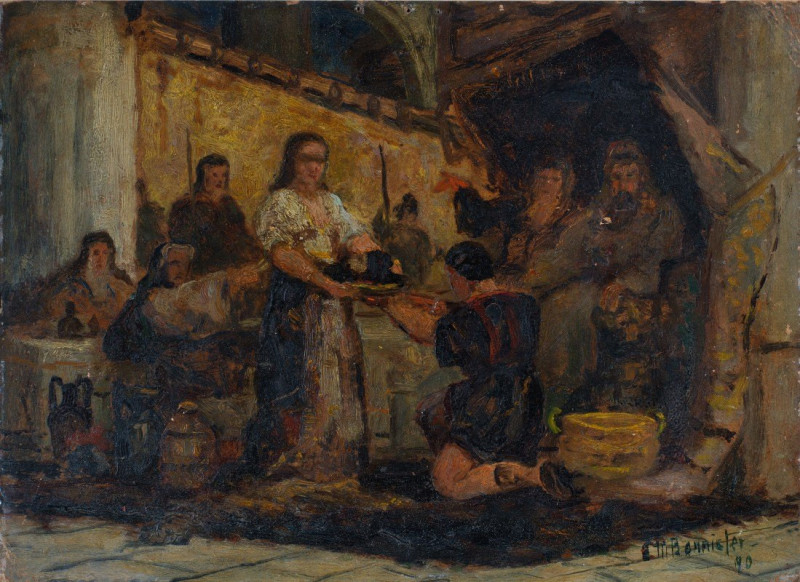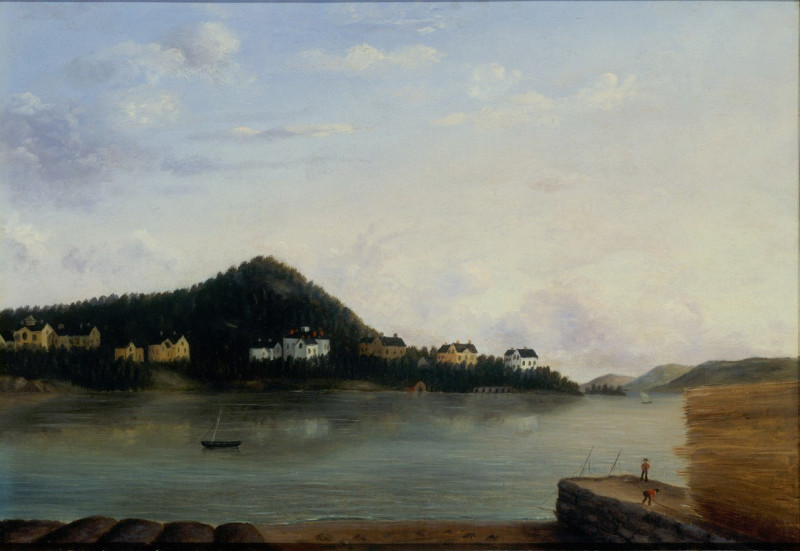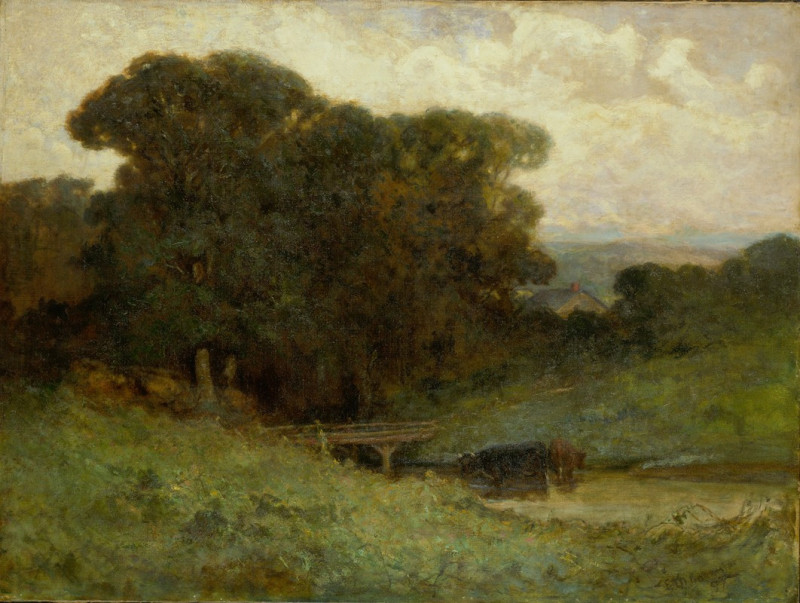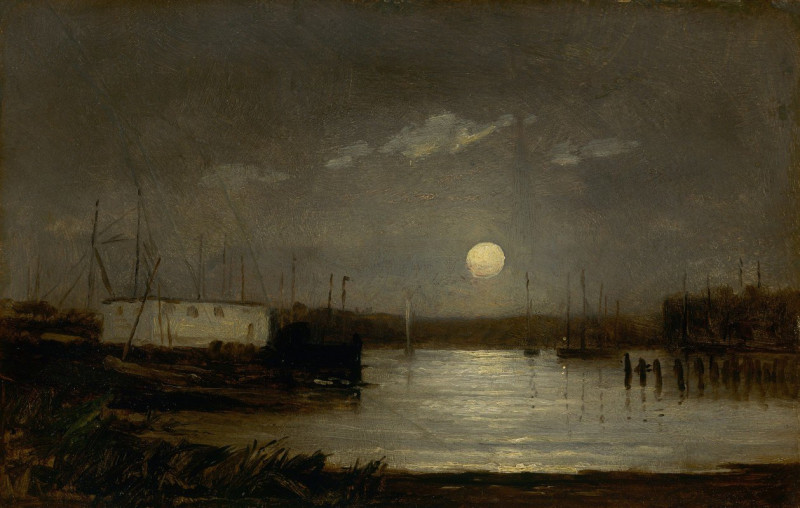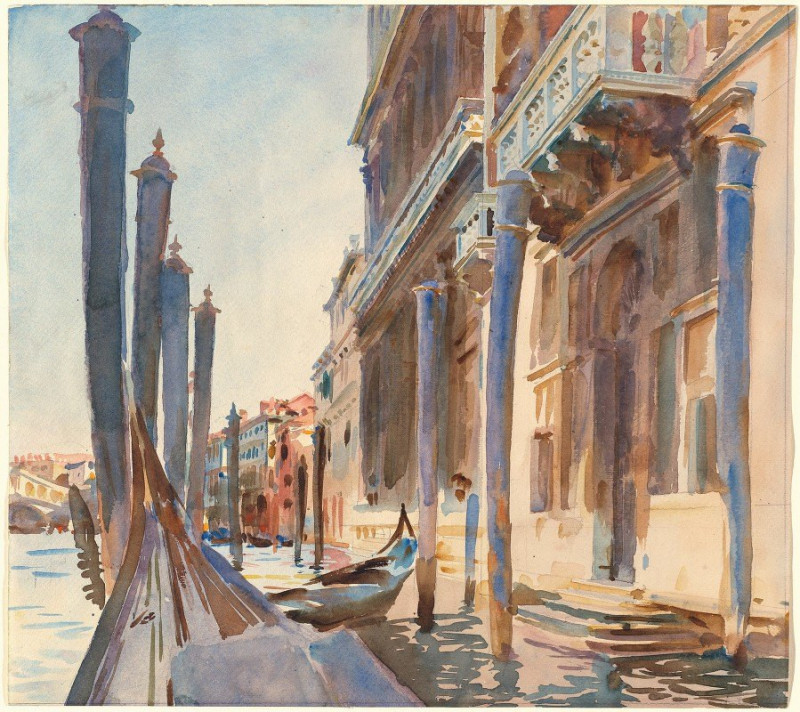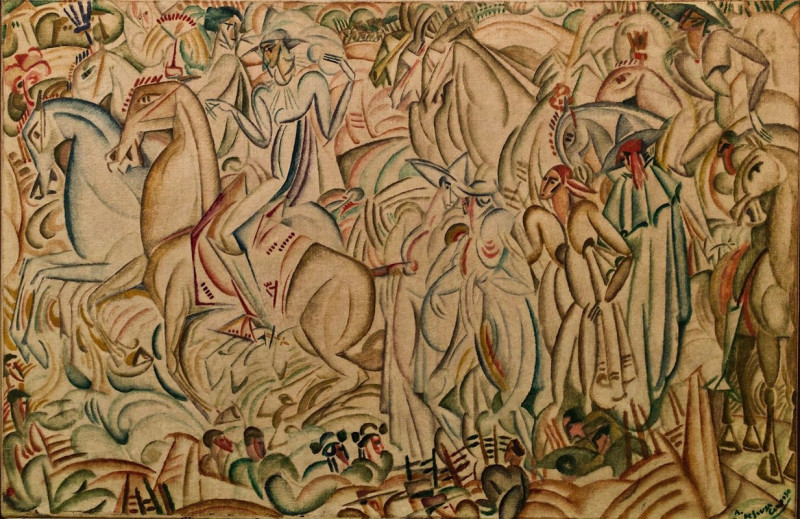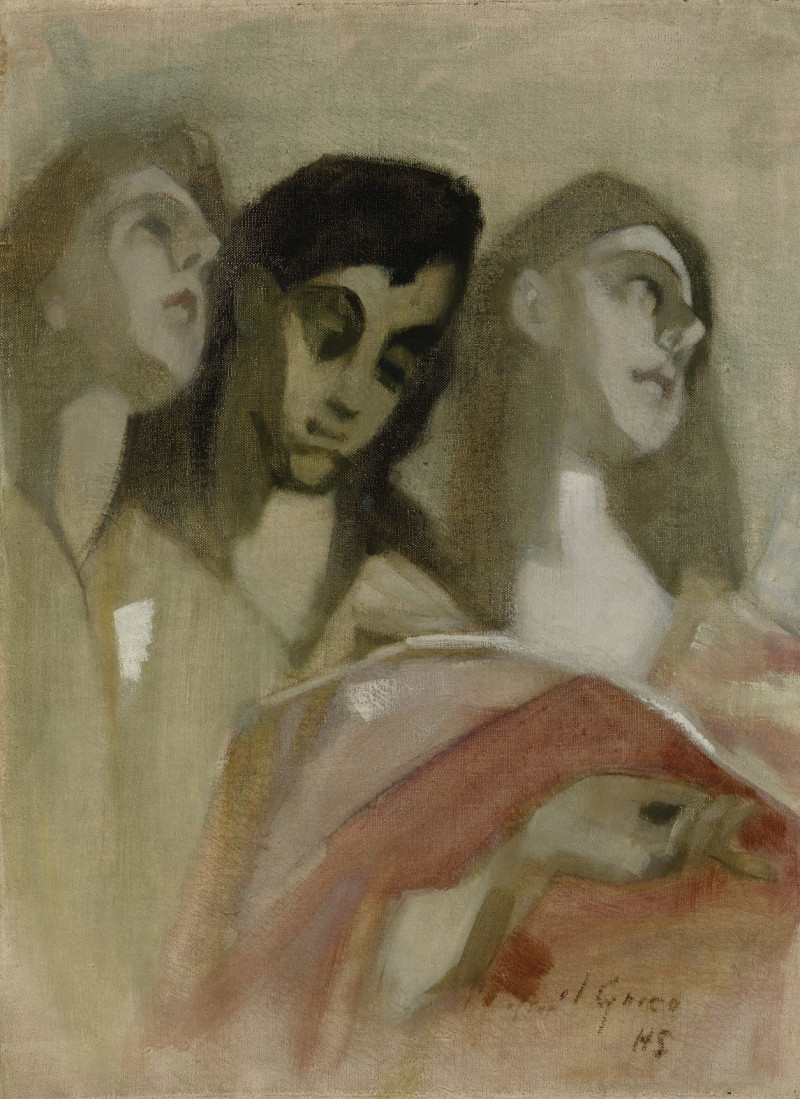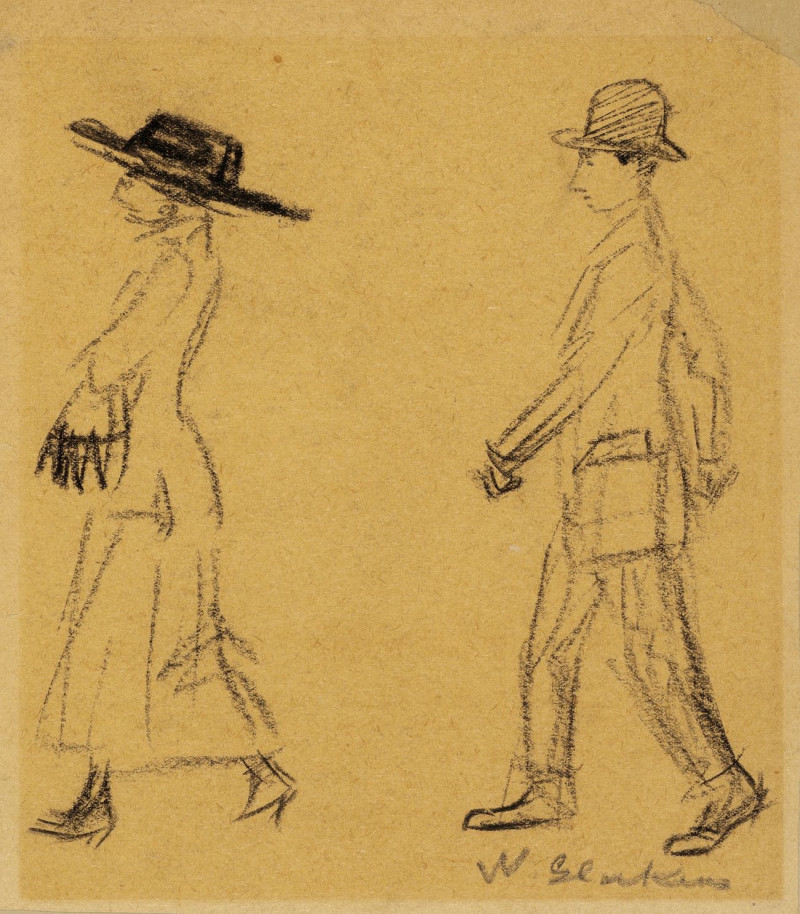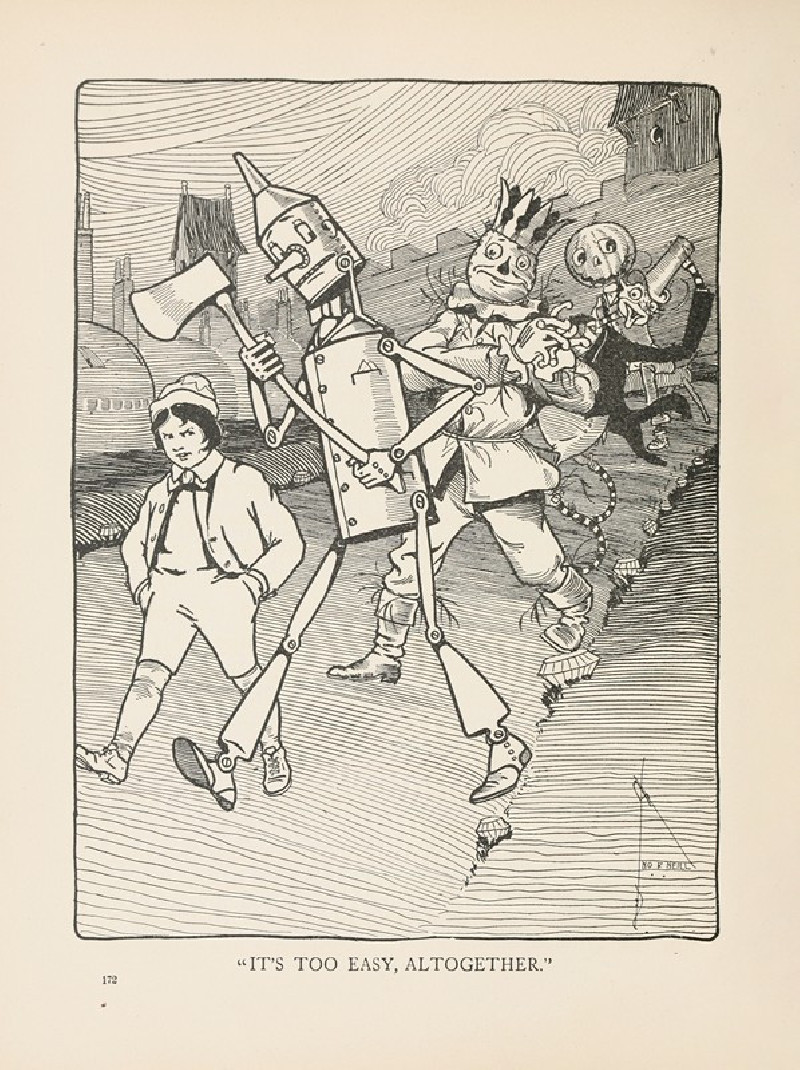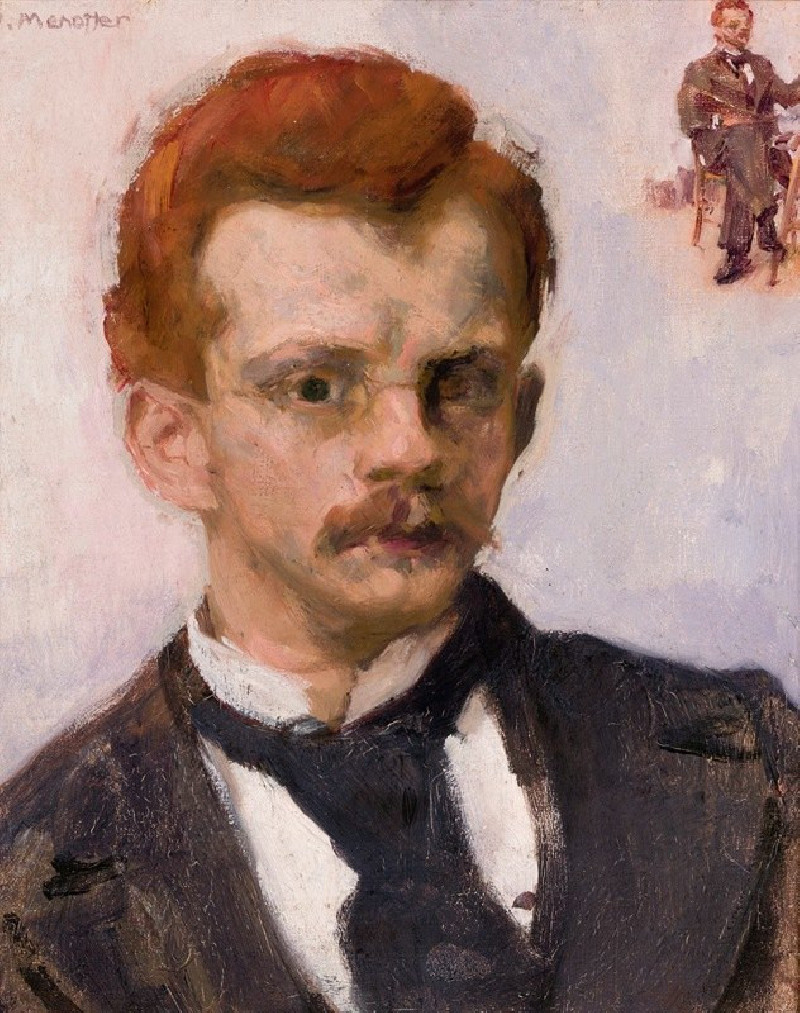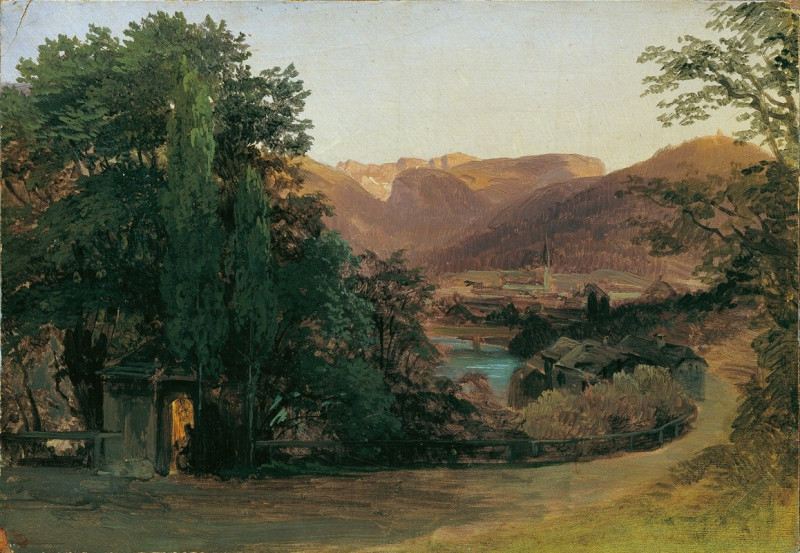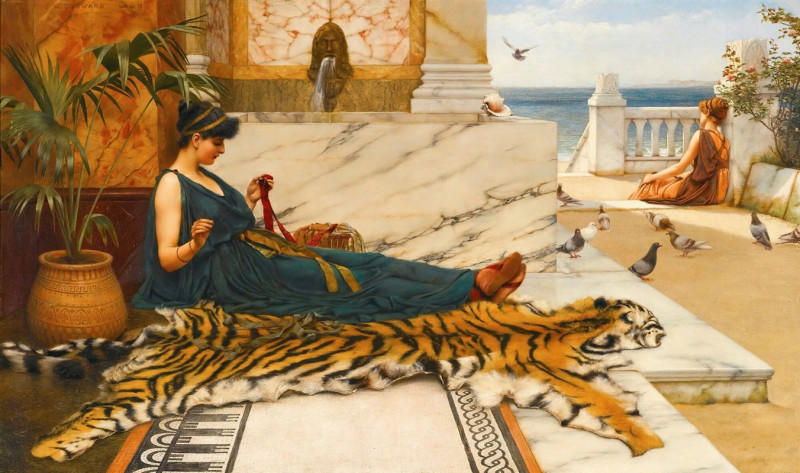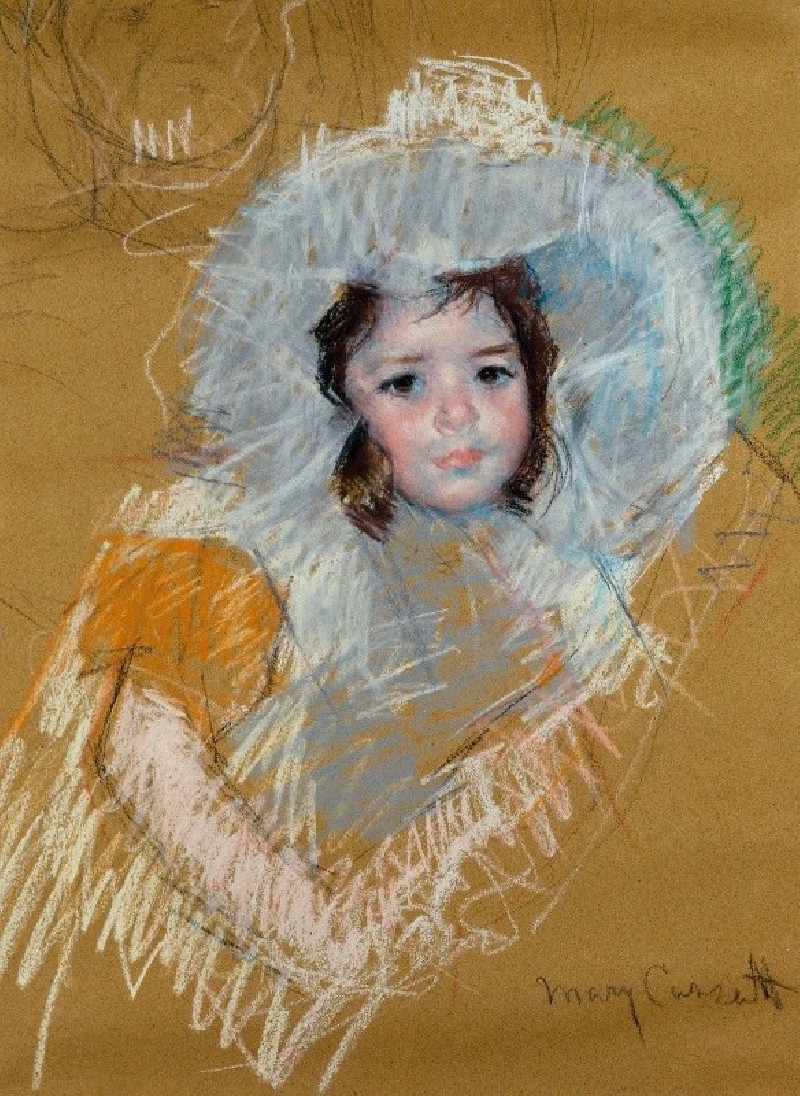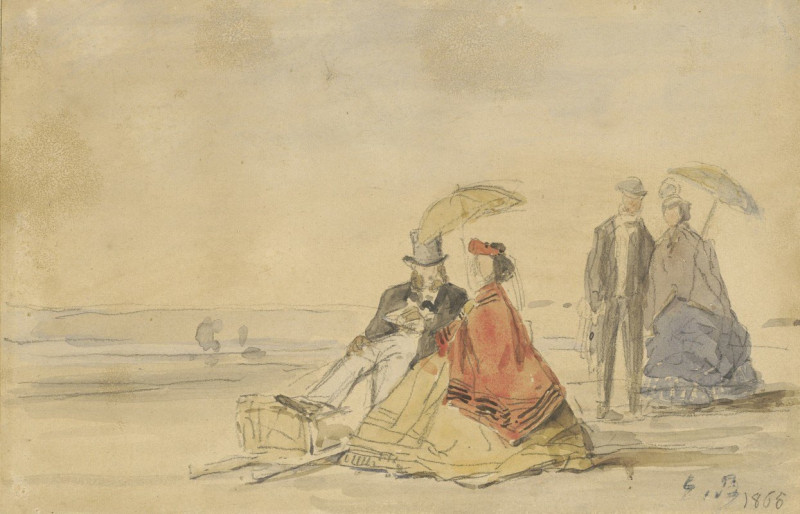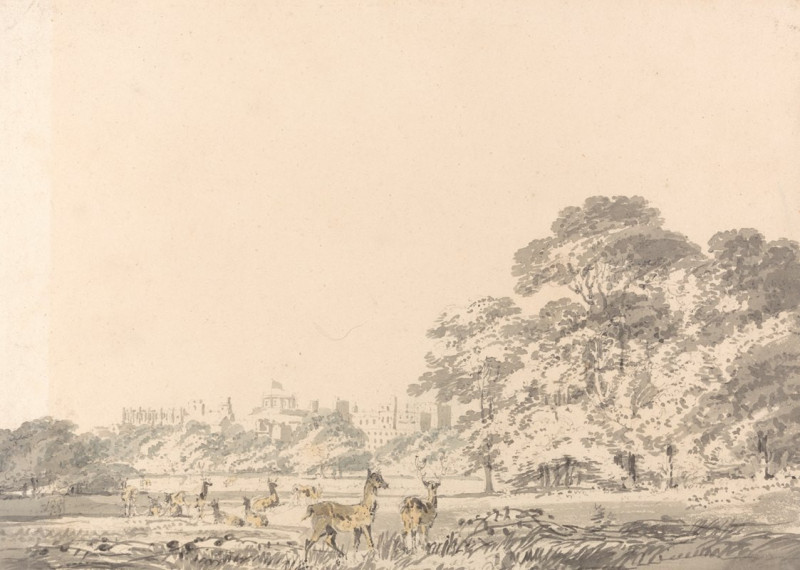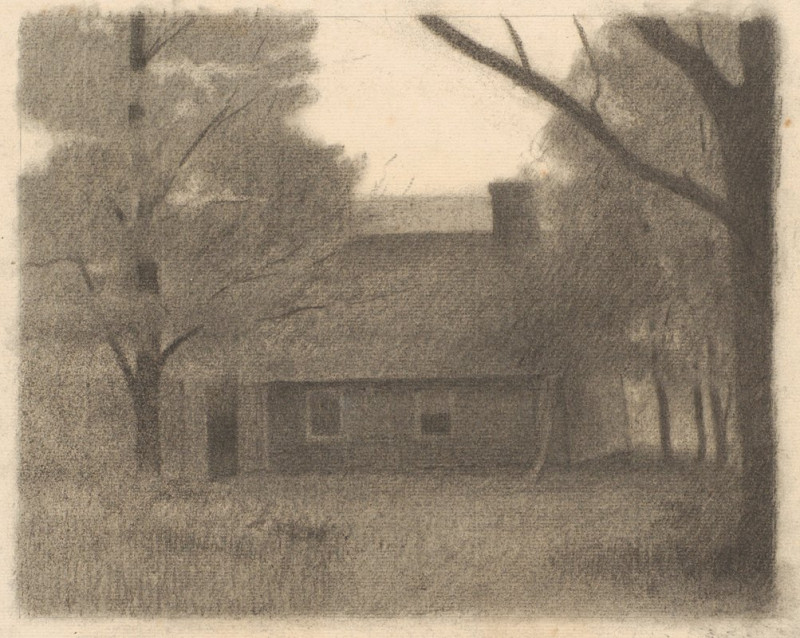Sunset (1883)
Technique: Giclée quality print
Recommended by our customers
More about this artwork
Dive into a captivating landscape with Edward Mitchell Bannister’s painting titled “Sunset,” painted in 1883. This striking work of art gently pulls the viewer into a serene, expansive meadow under the warm, glowing canvas of the evening sky. Bannister, known for his emotive and naturalistic landscapes, masterfully represents both the beauty and calm of the natural world.At the core of this painting, the sky dominates with its golden and amber hues, blending effortlessly into dusky purples and blues at the horizon. It’s a vivid, yet soothing depiction of the sky at sunset, suggesting the close of day. Below, the fields stretch widely, rendered with dynamic brush strokes in varying shades of green, indicating lush, dense grasses swaying gently in the breeze.A small figure appears near the center of the composition, possibly a farmer or wanderer, adding a human element that invokes a connection between man and nature. This figure is subtly integrated, suggesting the vastness of the landscape in contrast to the solitary person. This inclusion enhances the feeling of solitude and contemplation.Near the foreground, a mirror-like pond reflects the splendor above, adding depth and balance to the scene. The reflection carries the fiery tones of the sky into the cool earth, creating a harmonious interplay between the elements.Edward Mitchell Bannister’s “Sunset” is not just a visual experience but an emotional journey. It invites viewers to reflect on the peaceful end of the day, the quiet moments before nightfall, and the intimate bond between human existence and the natural world.
Delivery
Returns
Edward Mitchell Bannister (November 2, 1828 – January 9, 1901) was an oil painter of the American Barbizon school. Born in Canada, he spent his adult life in New England in the United States. There, along with his wife Christiana Carteaux Bannister, he was a prominent member of African-American cultural and political communities, such as the Boston abolition movement. Bannister received national recognition after he won a first prize in painting at the 1876 Philadelphia Centennial Exhibition. He was also a founding member of the Providence Art Club and the Rhode Island School of Design.

